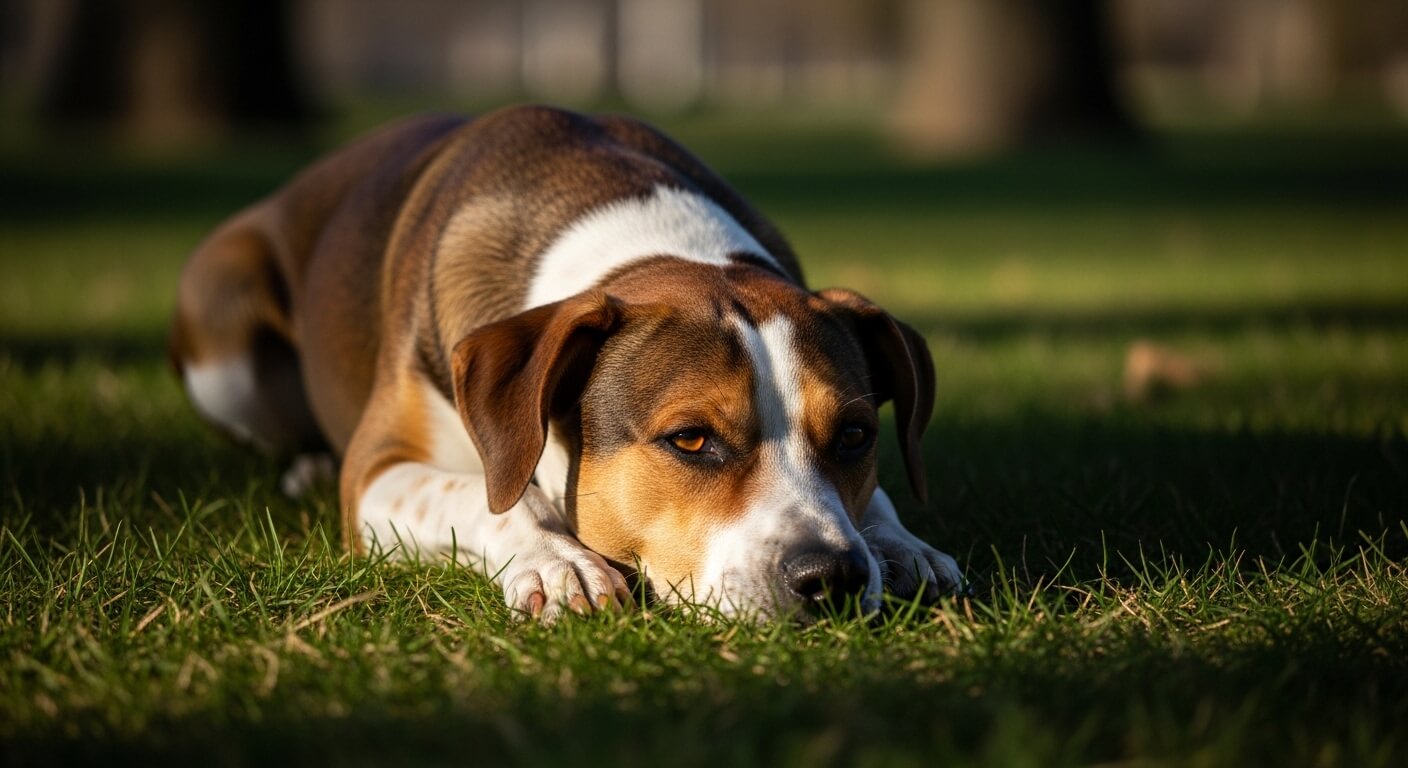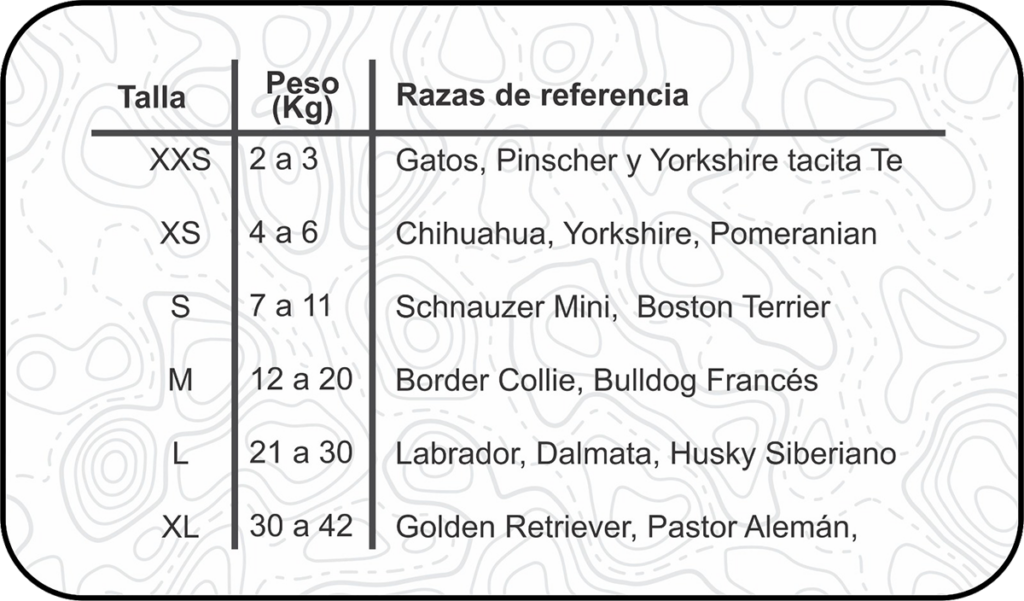
The Age of Dogs: A Complete Guide to Calculation and Canine Life Stages
The age of dogs is not calculated by simply multiplying by seven human years. Canine aging varies according to the size, breed and weight of the animal, with smaller breeds living longer than larger breeds. The first two years are roughly equivalent to 24 human years, then each canine year represents between 4-7 human years.
How to Calculate the Real Age of a Dog
The 7 Year Myth
The popular belief that each canine year is equivalent to seven human years is an incorrect simplification that does not reflect the reality of canine aging. This rule emerged as a basic estimate based on average life expectancy, but it ignores crucial factors such as the size and breed of the animal.
Problems with the 7-year rule:
- Does not consider differences between races
- Ignore the fact that dogs mature faster in their early years.
- Does not reflect variation in the rate of aging over the life span
- Produces inaccurate calculations for most cases
Modern Scientific Formula
Veterinarians and scientists have developed more accurate formulas based on longitudinal studies of canine aging. The most widely accepted formula currently uses the natural logarithm to reflect the nonlinear rate of aging.
Current scientific formula: Equivalent human age = 16 × ln(dog's age) + 31
This formula is based on epigenetic changes (modifications in gene expression) that occur in both humans and dogs during aging.
Size and Weight Method
The most practical and accurate method for owners considers the size of the dog as the main factor, as there is a clear inverse correlation between body size and longevity in canines.
Classification by size:
- Small dogs (less than 10 kg): Aging more slowly after 2 years of age
- Medium dogs (10-25 kg): Moderate aging rate
- Large dogs (25-45 kg): Aging more rapidly after maturity
- Giant dogs (over 45 kg): Accelerated aging and reduced life expectancy
Life Stages of Dogs
Puppy Stage (0-12 months)
The puppy stage is the most accelerated growth period in canine life, where fundamental physical, mental and social development occurs. During these months, the dog undergoes changes equivalent to the first 15-20 years of human life.
Development by months:
- 0-2 months: Total dependence on the mother, basic sensory development
- 2-4 months: Primary socialization, weaning, first vaccinations
- 4-6 months: Teething, basic training, secondary socialization
- 6-12 months: Sexual maturation, consolidation of temperament
Characteristics of this stage:
- Accelerated physical growth
- Maximum learning capacity
- Critical need for socialization
- Vulnerability to infectious diseases
- Immune system development
Juvenile Stage (1-2 years)
Juvenile dogs have completed their basic physical growth but continue to mature mentally. This stage is roughly equivalent to human adolescence, with impulsive behavior and abundant energy.
Changes during this stage:
- Growth completion in small and medium-sized breeds
- Continued growth in large and giant breeds
- Full sexual maturity
- Establishment of social hierarchies
- Development of independence
Typical behaviors:
- High energy and need for exercise
- Tendency to test limits and rules
- Destructive behaviors if energy is not channeled
- Increased confidence in familiar environments
- Possible regression in basic training
Adult Stage (2-7 years)
Adulthood represents the period of physical and mental stability of the dog. During these years, the animal maintains its maximum physical performance and has fully developed its personality.
Characteristics of the adult canine:
- Emotional and behavioral stability
- Maximum physical performance and endurance
- Established and predictable routines
- Reduced need for constant supervision
- Sustained work capacity
Specific care:
- Maintenance of ideal body weight
- Regular exercise adapted to the breed
- Annual veterinary check-ups
- Preventive dental care
- Continuous mental stimulation
Senior Stage (7+ years)
Entry into senior age varies significantly depending on the size of the dog. Large dogs can be considered seniors at 5-6 years of age, while small dogs do not reach this stage until 8-10 years of age.
Aging indicators:
- Gradual decrease in activity
- Changes in sleep patterns
- Possible development of gray hair on the muzzle
- Lower tolerance to intense exercise
- Changes in appetite or food preferences
Factors Affecting Canine Longevity
Size and Breed
Body size is the most reliable predictor of canine life expectancy. This inverse relationship is due to several biological factors related to metabolism, growth and physiological stress.
Average life expectancy by size:
- Toy breeds (Chihuahua, Yorkshire): 12-16 years
- Small breeds (Beagle, Cocker Spaniel): 10-14 years
- Medium breeds (Border Collie, Bulldog): 8-12 years
- Large breeds (Labrador, German Shepherd): 7-10 years
- Giant breeds (Great Dane, St. Bernard): 5-8 years
Genetics and Racial Purity
Purebred dogs often face specific health problems due to inbreeding and selection for aesthetic characteristics that can compromise health. Mongrel dogs often enjoy better overall health due to genetic diversity.
Common hereditary conditions:
- Hip dysplasia: Common in large breeds
- Heart problems: Frequent in small breeds
- Respiratory problems: Typical in brachycephalic breeds
- Ocular problems: Varied according to breed
- Epilepsy: Genetically predisposed in certain lines
Nutrition and Body Weight
Proper nutrition and maintaining a healthy body weight are critical factors that can significantly extend a dog's life. Canine obesity reduces life expectancy by an average of 2-3 years.
Impact of weight on longevity:
- Ideal weight: Maximizes life expectancy and quality of life
- Overweight (10-20% excess): Slightly reduces longevity
- Obesity (more than 20% excess): Significant impact on health and longevity
- Low weight: May indicate underlying health problems
Preventive Veterinary Care
Regular, preventive veterinary care can detect and treat health problems before they become serious. Routine check-ups allow care to be adjusted according to the age and condition of the animal.
Components of preventive care:
- Vaccinations according to the appropriate schedule
- Regular internal and external deworming
- Professional dental cleanings
- Annual blood tests after 7 years of age
- Breed and predisposition specific checkups
Signs of Aging in Dogs
Visible Physical Changes
Canine aging manifests itself through various physical changes that can be observed gradually. Recognizing these signs helps to adapt care and detect potential problems early.
Physical signs of aging:
- Coat: Appearance of gray hair, changes in texture, reduced gloss, etc.
- Eyes: Opacity of the crystalline lens, reduced visual acuity
- Mobility: Morning stiffness, difficulty getting up, mild lameness
- Weight: Tendency to unexplained weight gain or weight loss
- Leather: Decreased elasticity, appearance of benign lumps
Behavioral Changes
Behavioral changes may be more subtle but are equally indicative of the aging process. These changes reflect neurological and physical modifications that affect the animal's perception and response.
Typical behavioral modifications:
- Activity: Gradual reduction of the energy level
- Dream: Increased rest time, changes in sleeping patterns
- Socialization: Possible reduction of interest in social interactions
- Anxiety: Development of new fears or intensification of existing fears
- Orientation: Occasional confusion in family environments
Cognitive Changes
Canine cognitive dysfunction syndrome is equivalent to human dementia and affects a significant percentage of senior dogs. Signs may be subtle initially but progress over time.
Symptoms of cognitive dysfunction:
- Disorientation in familiar spaces
- Changes in sleep-wake cycles
- Reduction of social interactions
- Loss of home training
- Repetitive behaviors without purpose
Specific Care by Life Stage
Puppy Care
Puppies require specialized attention to ensure healthy development. Nutrition, socialization and veterinary care during this stage lay the foundation for a long and healthy life.
Puppy care priorities:
- Specialized nutrition: Formulated feed for growth
- Scheduled vaccination: Strict adherence to the veterinary calendar
- Controlled socialization: Safe exposure to various stimuli
- Basic training: Fundamental commands and social manners
- Constant supervision: Prevention of accidents and dangerous behavior
Adult Care
Adult dogs need stable routines that maintain their optimal physical and mental health. The focus is on prevention and maintenance of established conditions.
Key elements of adult care:
- Regular exercise: Adapted to breed, size and physical condition
- Balanced diet: Maintenance of ideal body weight
- Mental stimulation: Games, training and cognitive challenges
- Dental care: Regular brushing and professional check-ups
- Health monitoring: Attention to subtle changes in behavior
Senior Care
Senior dogs require modifications in their care to adapt to the physical limitations and changing needs of aging.
Adaptations for senior dogs:
- Senior diet: Specific formulations for the elderly
- Modified exercise: Lower intensity, higher frequency
- Joint comfort: Orthopedic beds, joint supplements, joint supplements
- Frequent revisions: Veterinary controls every 6 months
- Home adaptations: Ramps, anti-slip surfaces
Canine to Human Age Conversion Chart
By Breed Size
Small breeds (less than 10 kg):
- 1 canine year = 15 human years
- 2 canine years = 24 human years
- 3 canine years = 28 human years
- 5 canine years = 36 human years
- 10 canine years = 56 human years
- 15 canine years = 76 human years
Medium breeds (10-25 kg):
- 1 canine year = 15 human years
- 2 canine years = 24 human years
- 3 canine years = 29 human years
- 5 canine years = 38 human years
- 10 canine years = 60 human years
- 12 canine years = 69 human years
Large breeds (25-45 kg):
- 1 canine year = 15 human years
- 2 canine years = 24 human years
- 3 canine years = 31 human years
- 5 canine years = 42 human years
- 8 canine years = 55 human years
- 10 canine years = 66 human years
Giant breeds (over 45 kg):
- 1 canine year = 15 human years
- 2 canine years = 24 human years
- 3 canine years = 33 human years
- 5 canine years = 45 human years
- 7 canine years = 56 human years
- 9 canine years = 66 human years
Maximizing Canine Longevity
Optimized Nutrition
A high-quality diet tailored to each stage of life is essential to maximize both longevity and quality of life. Nutrition directly influences the immune system, joint health and cognitive function.
Principles of nutrition by age:
- Puppies: High protein and calories for growth
- Adults: Nutritional balance for maintenance
- Seniors: Reduced calories, increased fiber, specific supplements
Regular Physical Activity
Regular exercise maintains the dog's cardiovascular, muscular and mental health. Activity should be adapted to the age, physical condition and individual limitations of the animal.
Benefits of regular exercise:
- Healthy weight maintenance
- Strengthening of the cardiovascular system
- Preservation of muscle mass and bone density
- Mental stimulation and stress reduction
- Improved sleep quality
Preventive Dental Care
Dental health significantly impacts overall canine health and longevity. Periodontal disease can lead to systemic infections that affect vital organs.
Dental care strategies:
- Regular tooth brushing with specific products for dogs
- Chewable toys that promote dental cleaning
- Professional cleanings according to veterinary recommendations
- Formulated diets for dental health
- Regular monitoring for signs of periodontal disease
When to Consider a Senior Dog
Transition Indicators
The transition to senior age does not occur abruptly but gradually. Recognizing the early signs allows preventive care to be implemented before significant problems develop.
Early signs of aging:
- Preference for soft surfaces for resting
- Less enthusiasm for previously enjoyed activities
- Subtle changes in eating patterns
- Increased recovery time after exercise
- Development of more rigid routines
Care Adjustments
The transition to senior care should be gradual and customized to the specific needs of the animal. Premature changes may be unnecessary, while delay may compromise welfare.
Gradual modifications recommended:
- Progressive introduction of joint supplements
- Dietary adjustments to senior formulations
- Increased frequency of veterinary check-ups
- Environmental modifications for comfort
- Adaptation of exercise routines
Conclusion
Understanding your dog's actual age is critical to providing appropriate care at every stage of your dog's life. Accurate canine age estimation, which considers factors such as size and breed, allows you to make informed decisions about nutrition, exercise and veterinary care.
Canine longevity depends on multiple factors, many of which are within the owner's control. A combination of proper nutrition, regular exercise, preventive veterinary care and attention to changing needs can maximize both the length and quality of life of our canine companions.
Remember that each dog is unique and that generalities about age and aging must be adapted to the individual characteristics of the animal. Close observation and regular communication with veterinary professionals are the best tools to ensure that our dogs live long, healthy and fulfilling lives.







